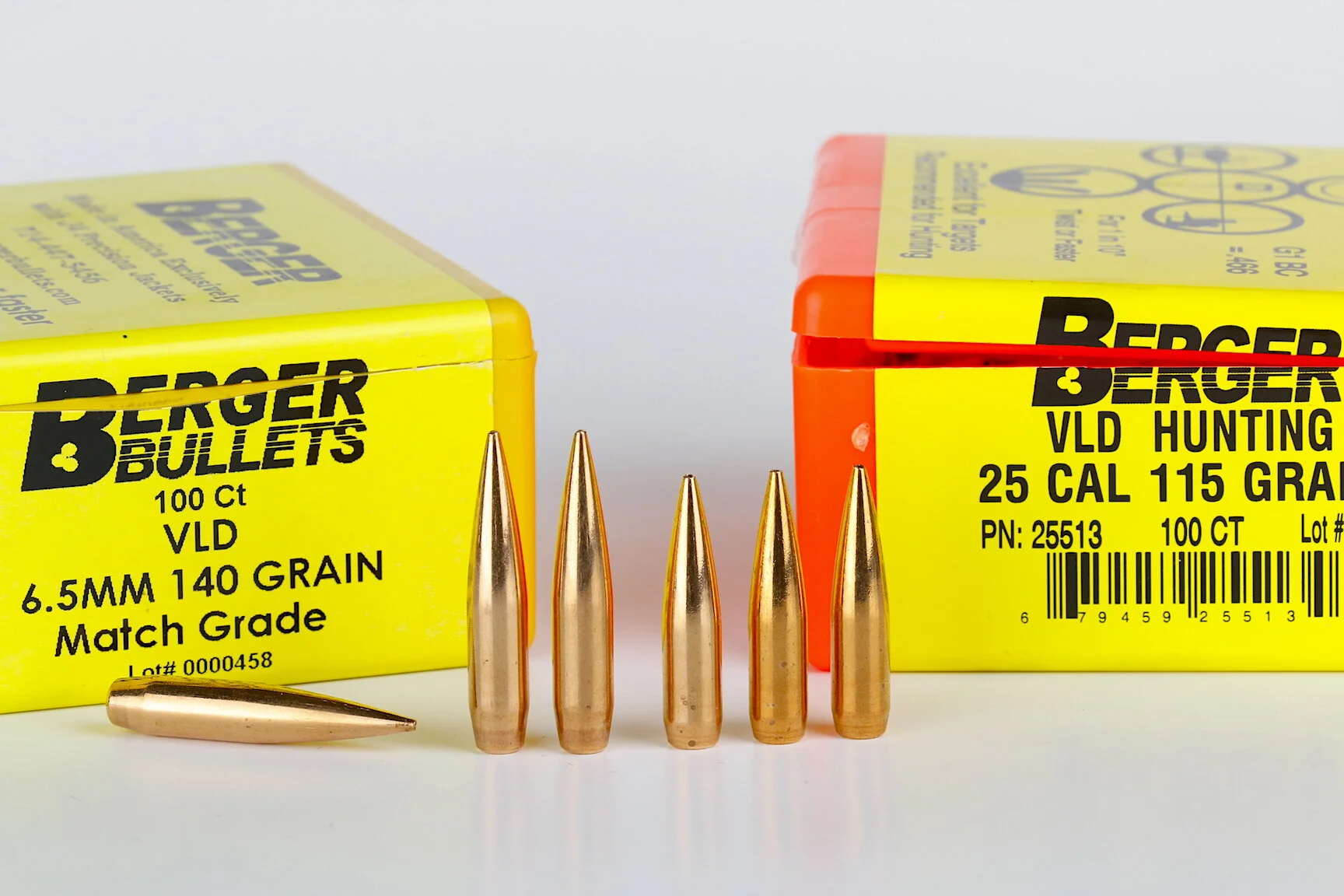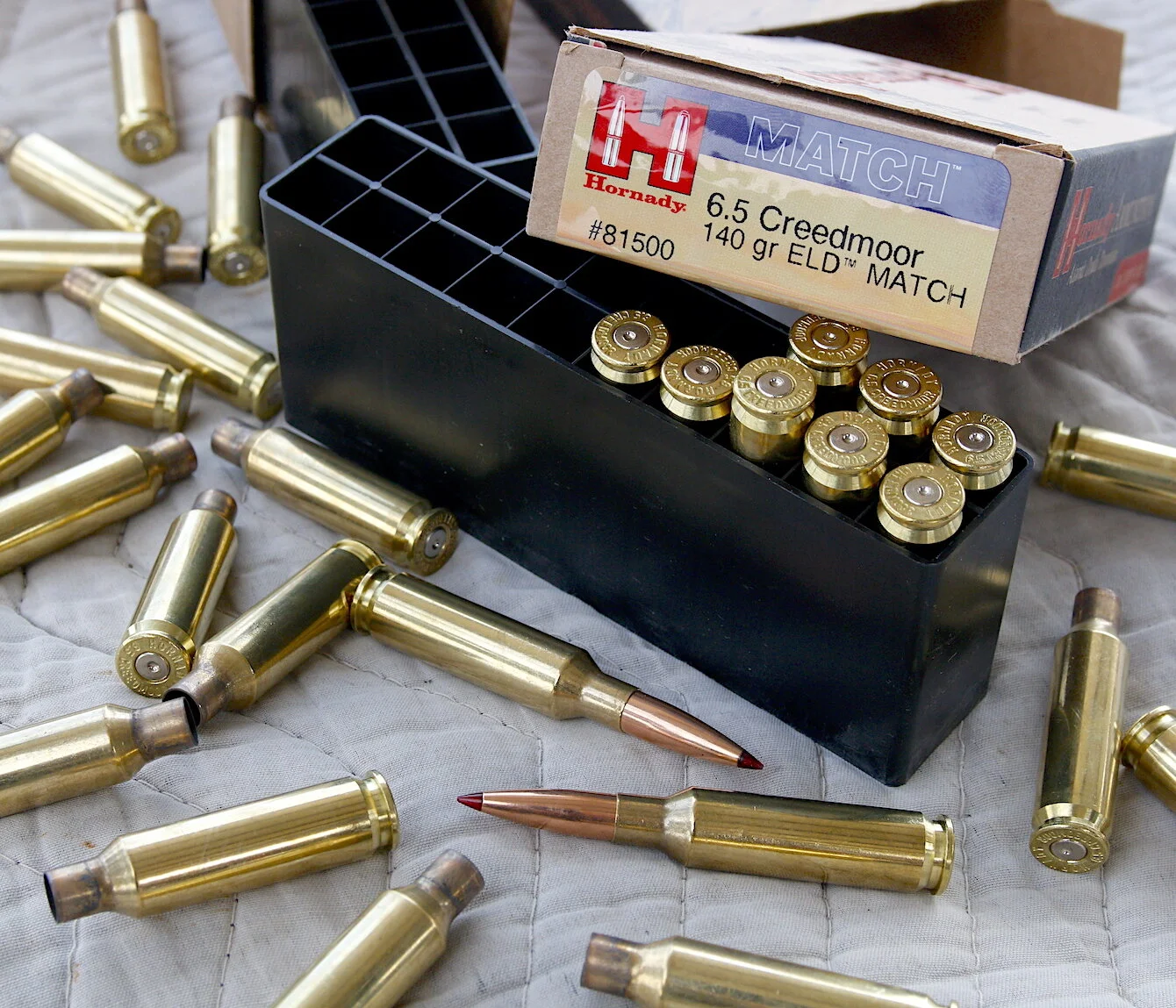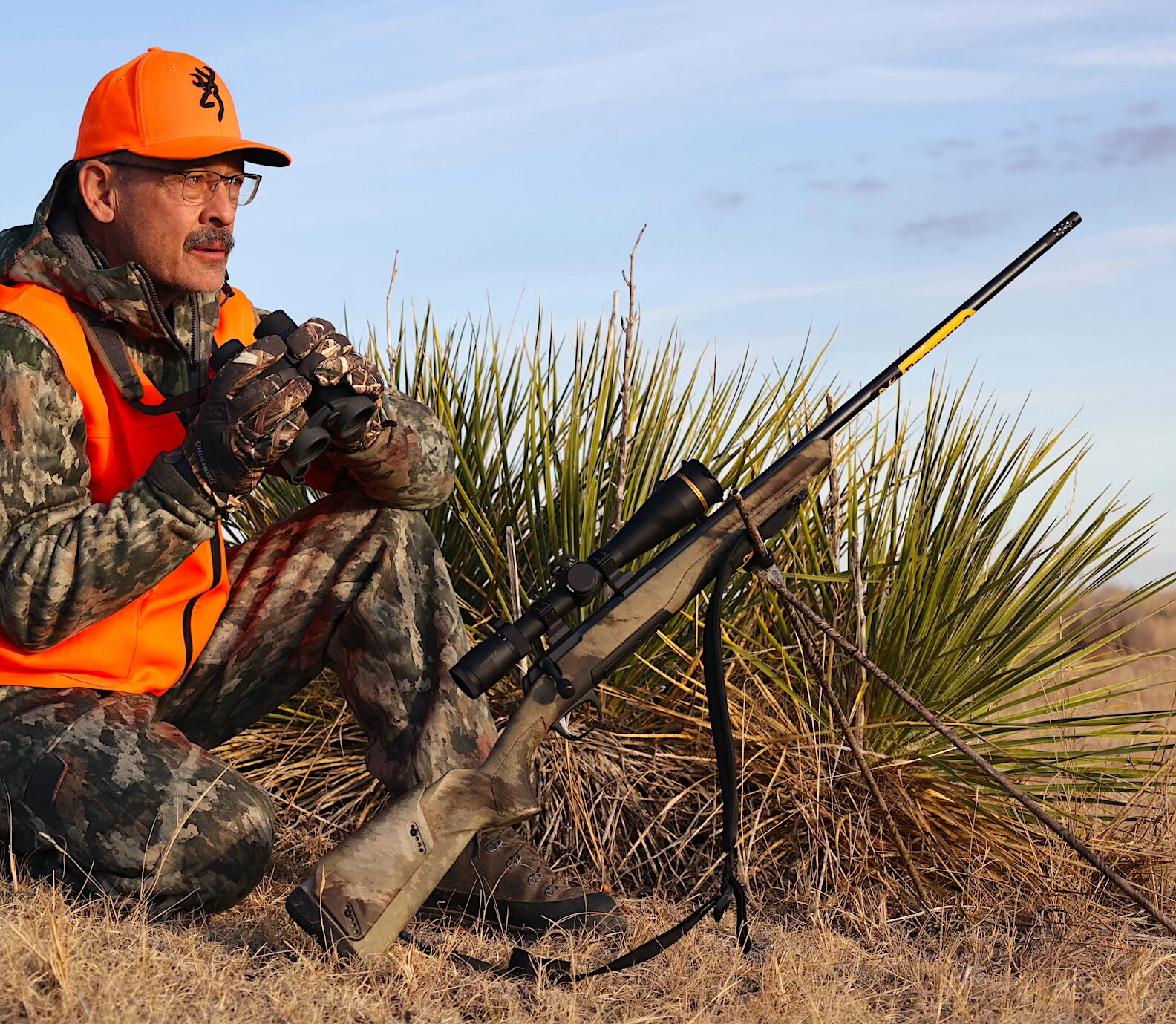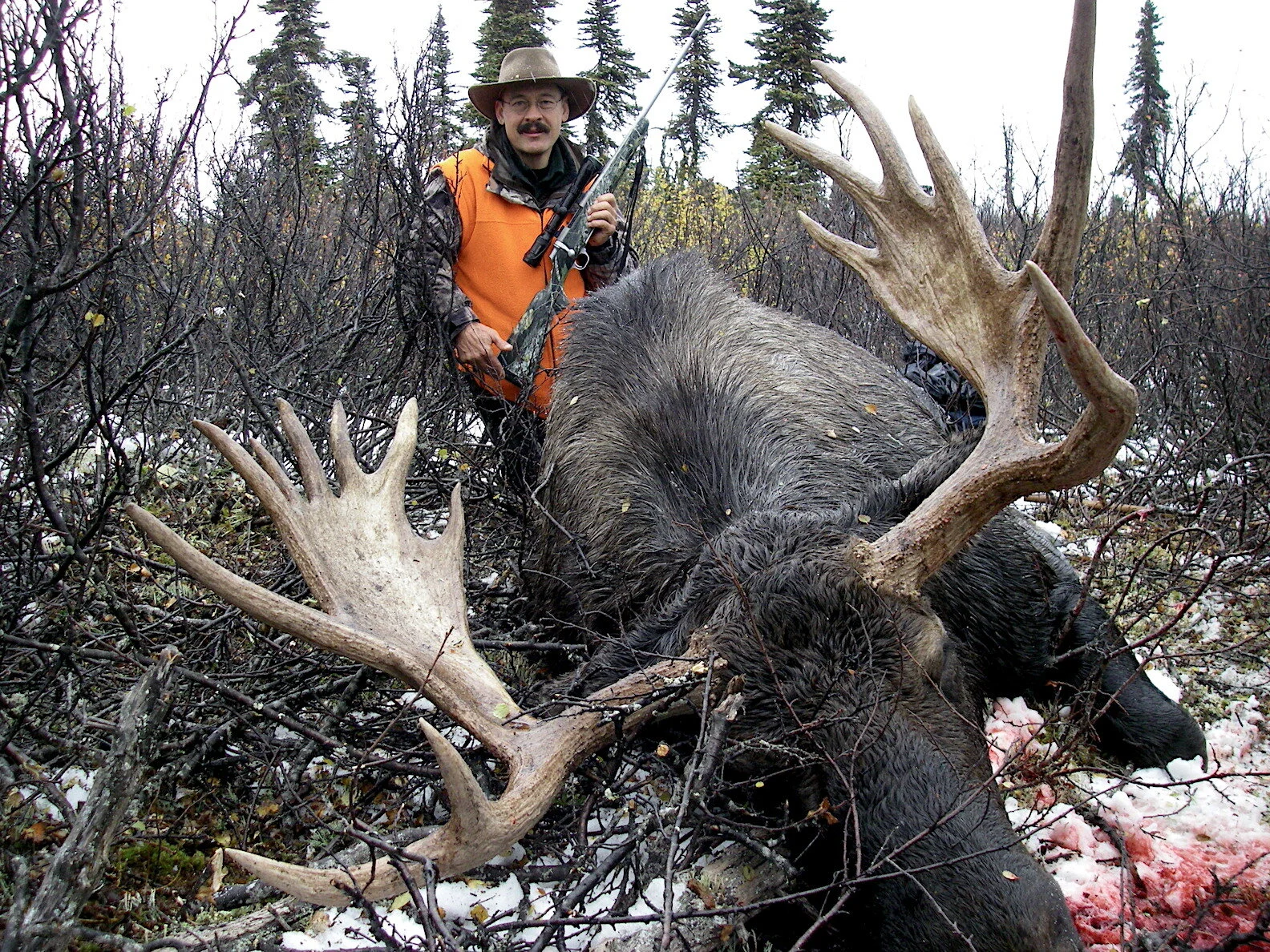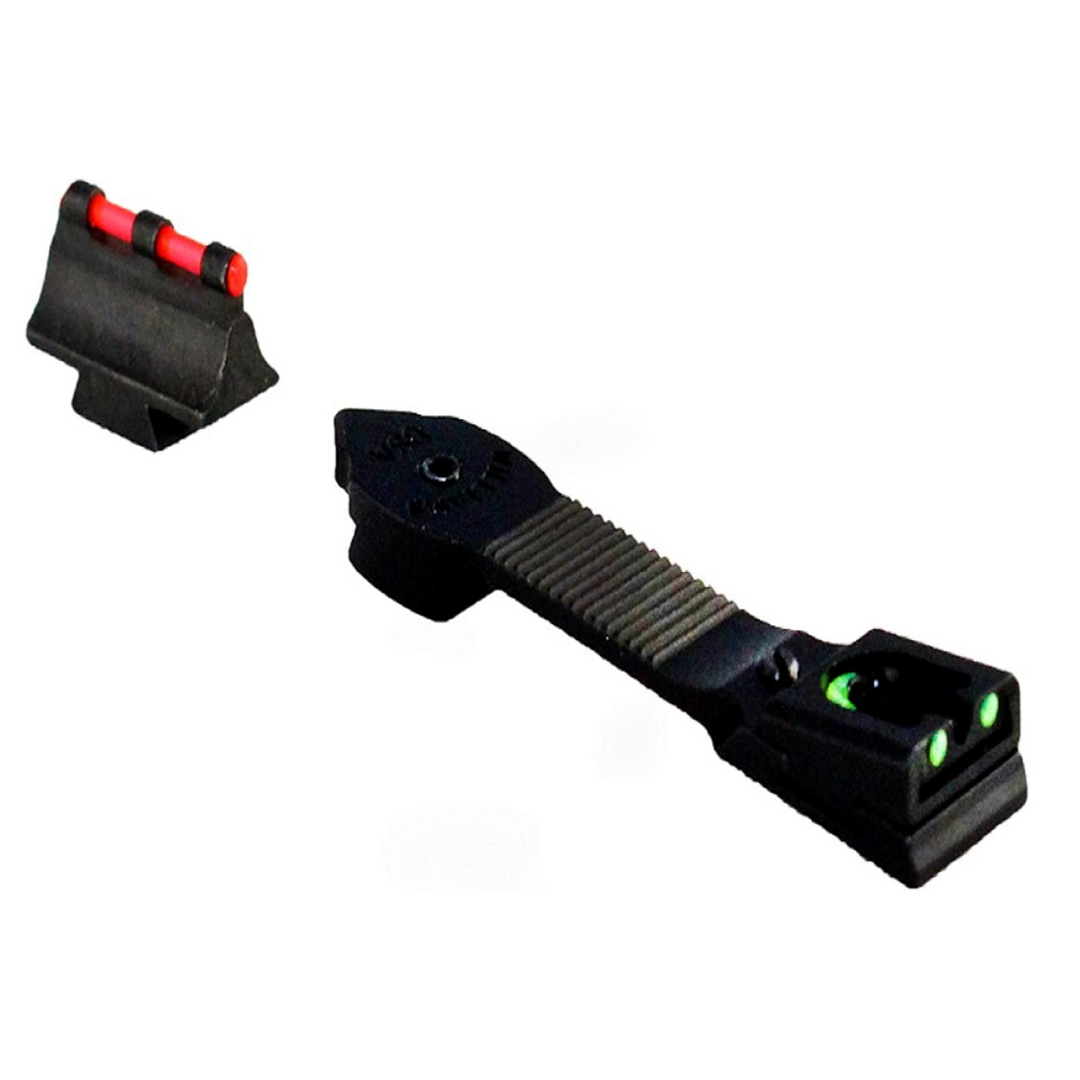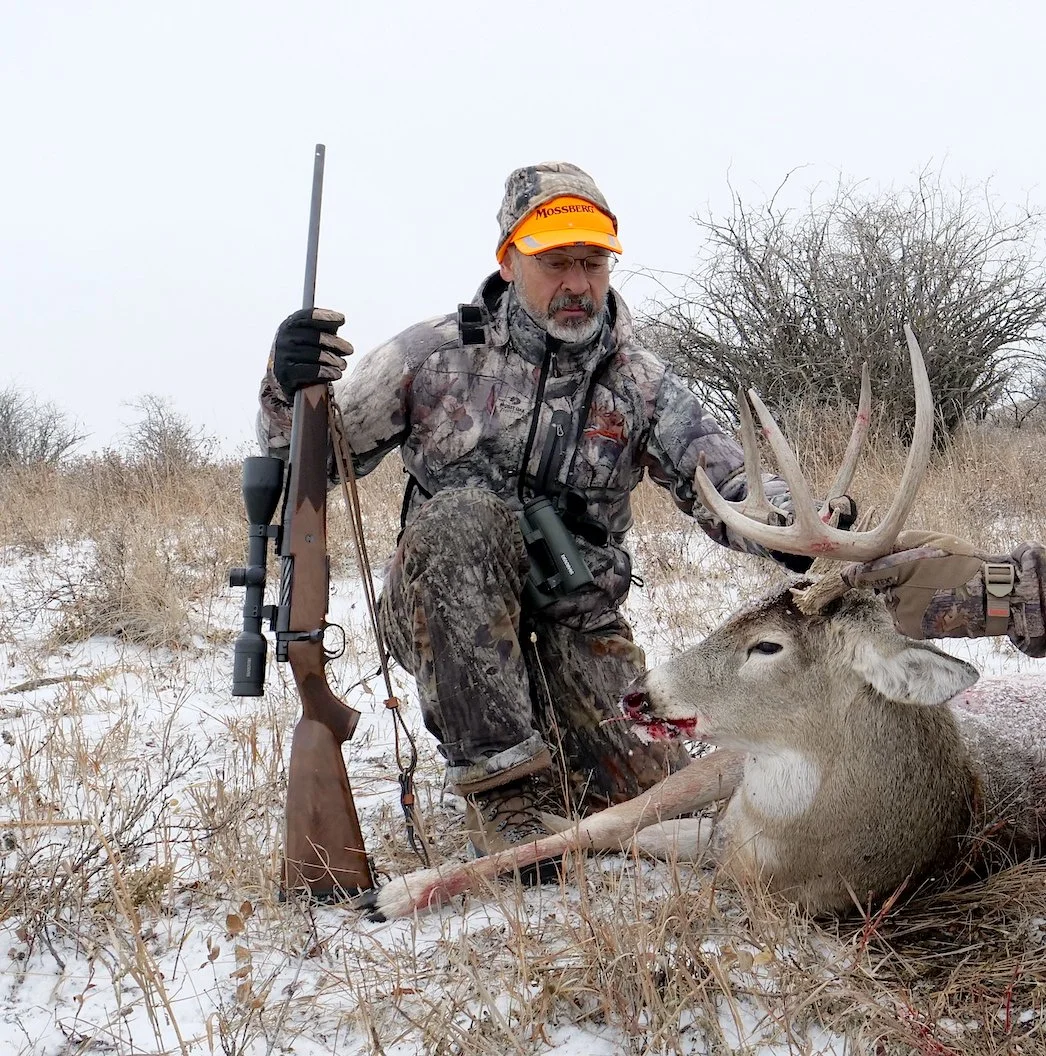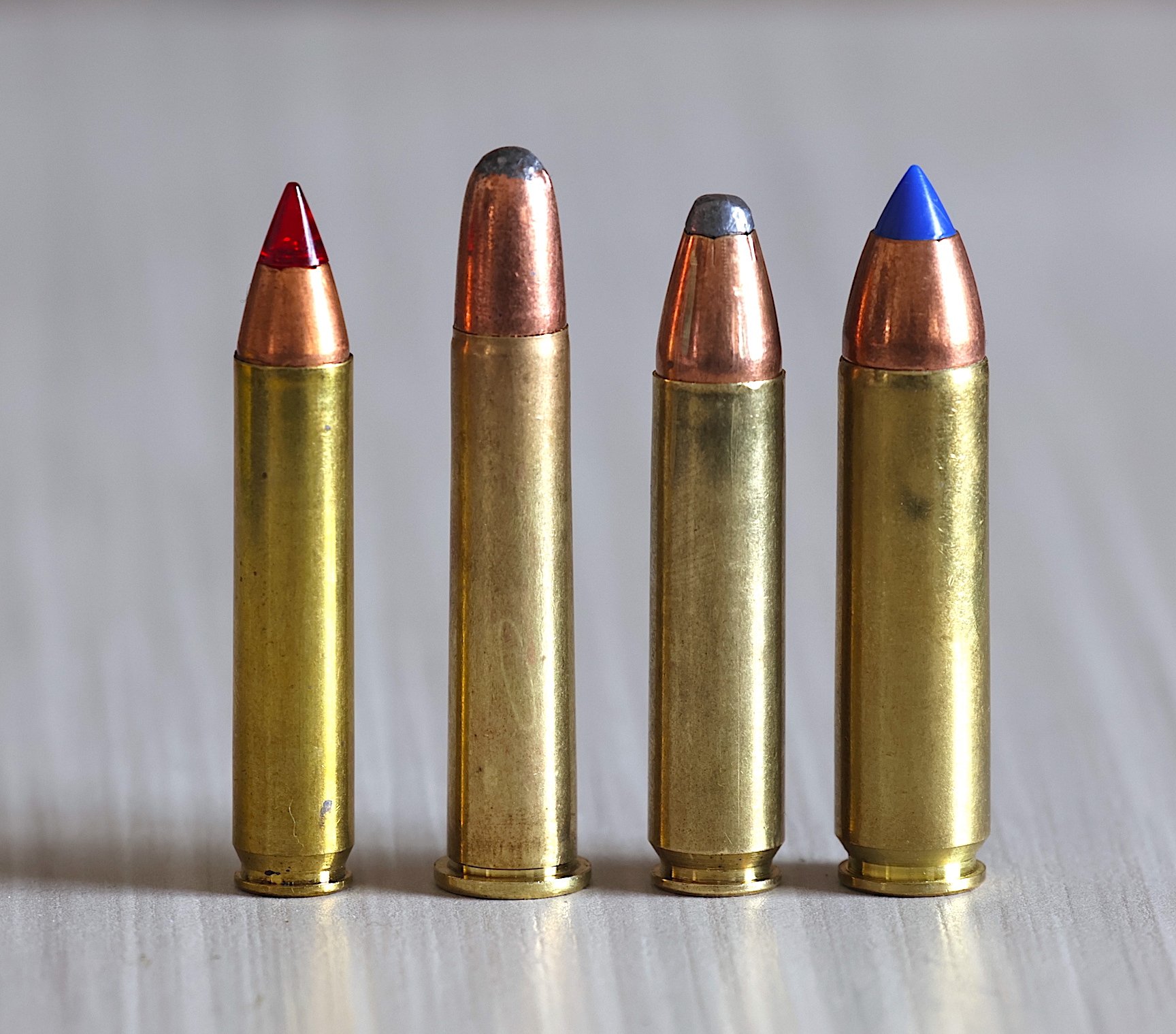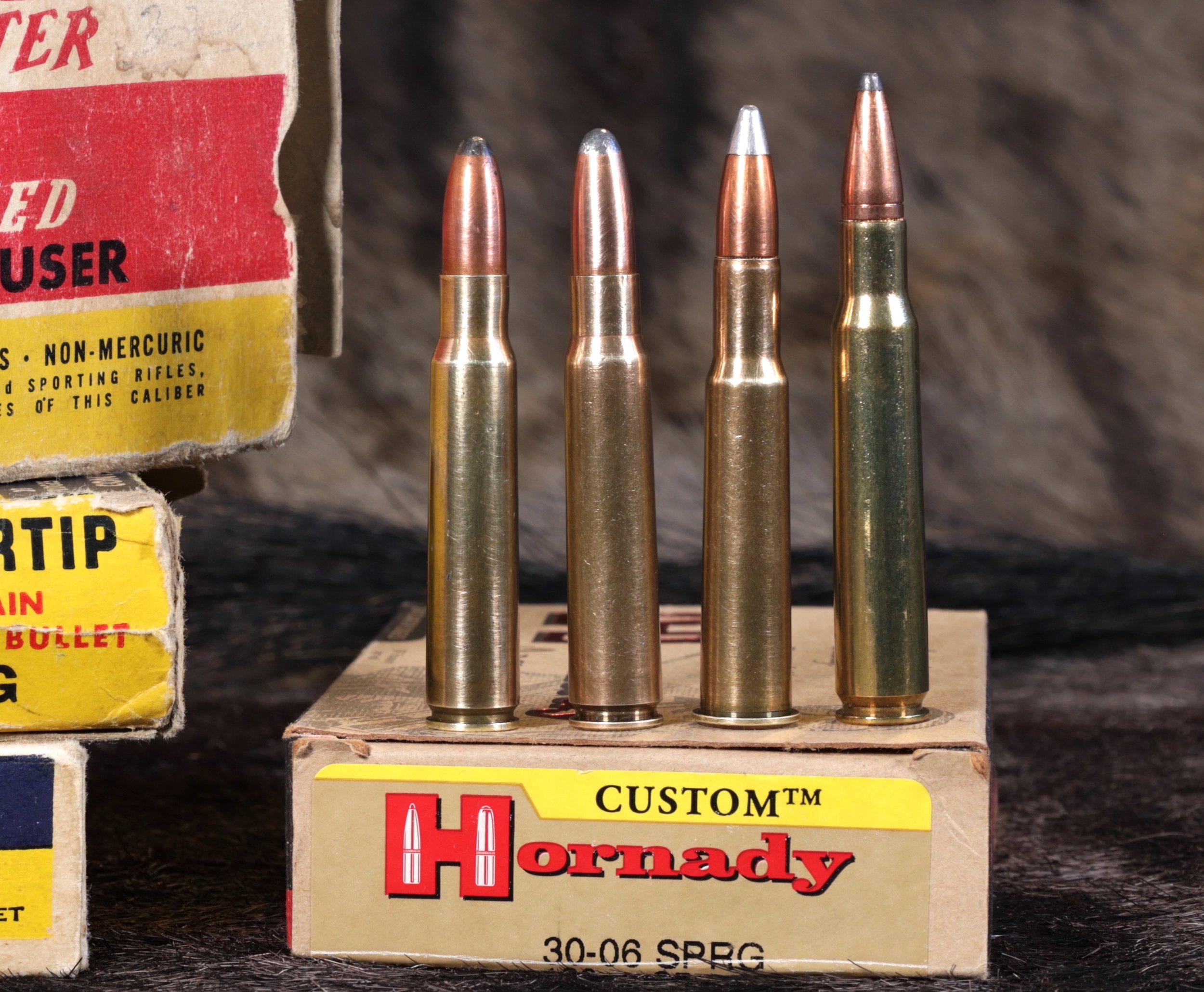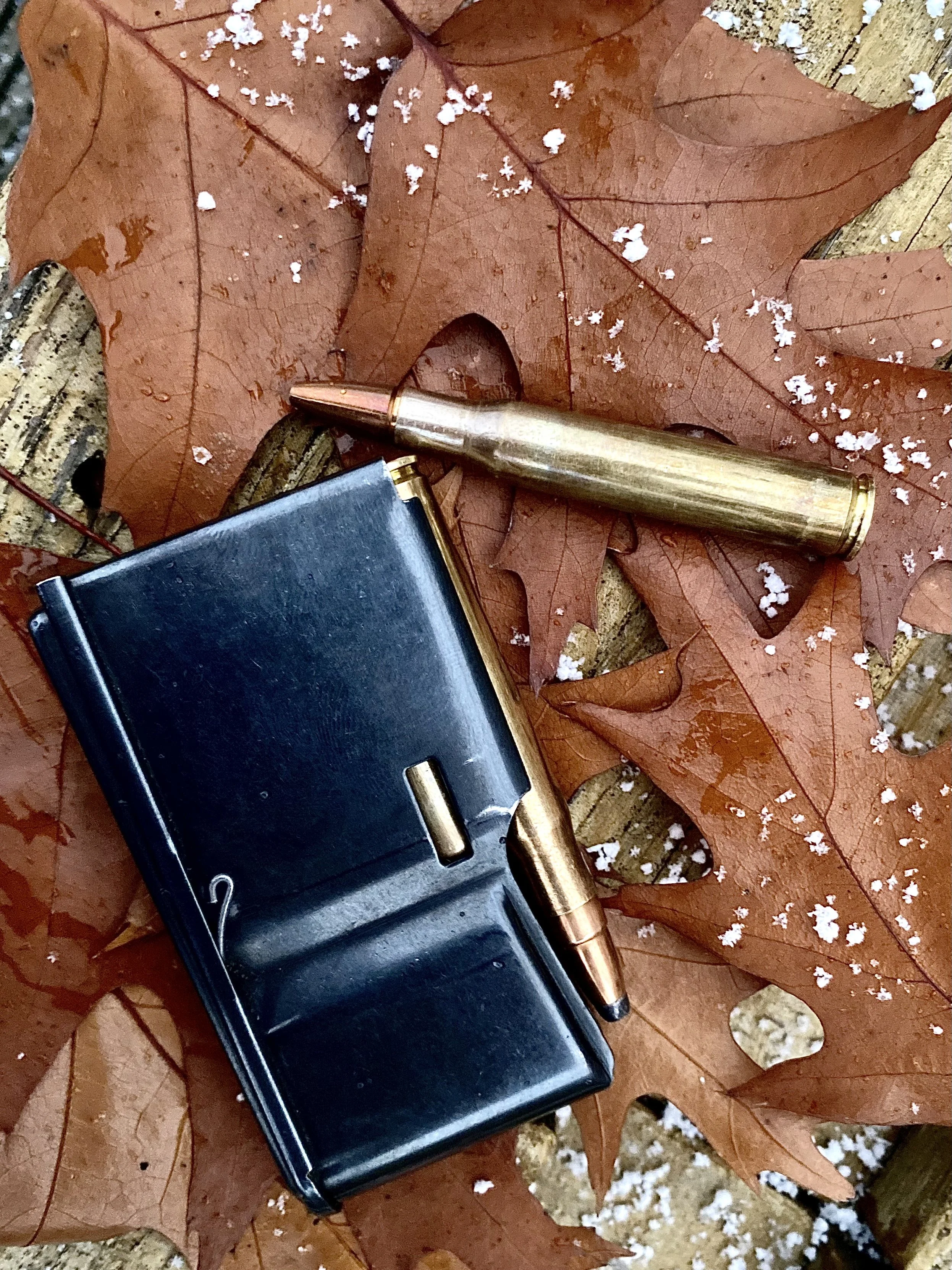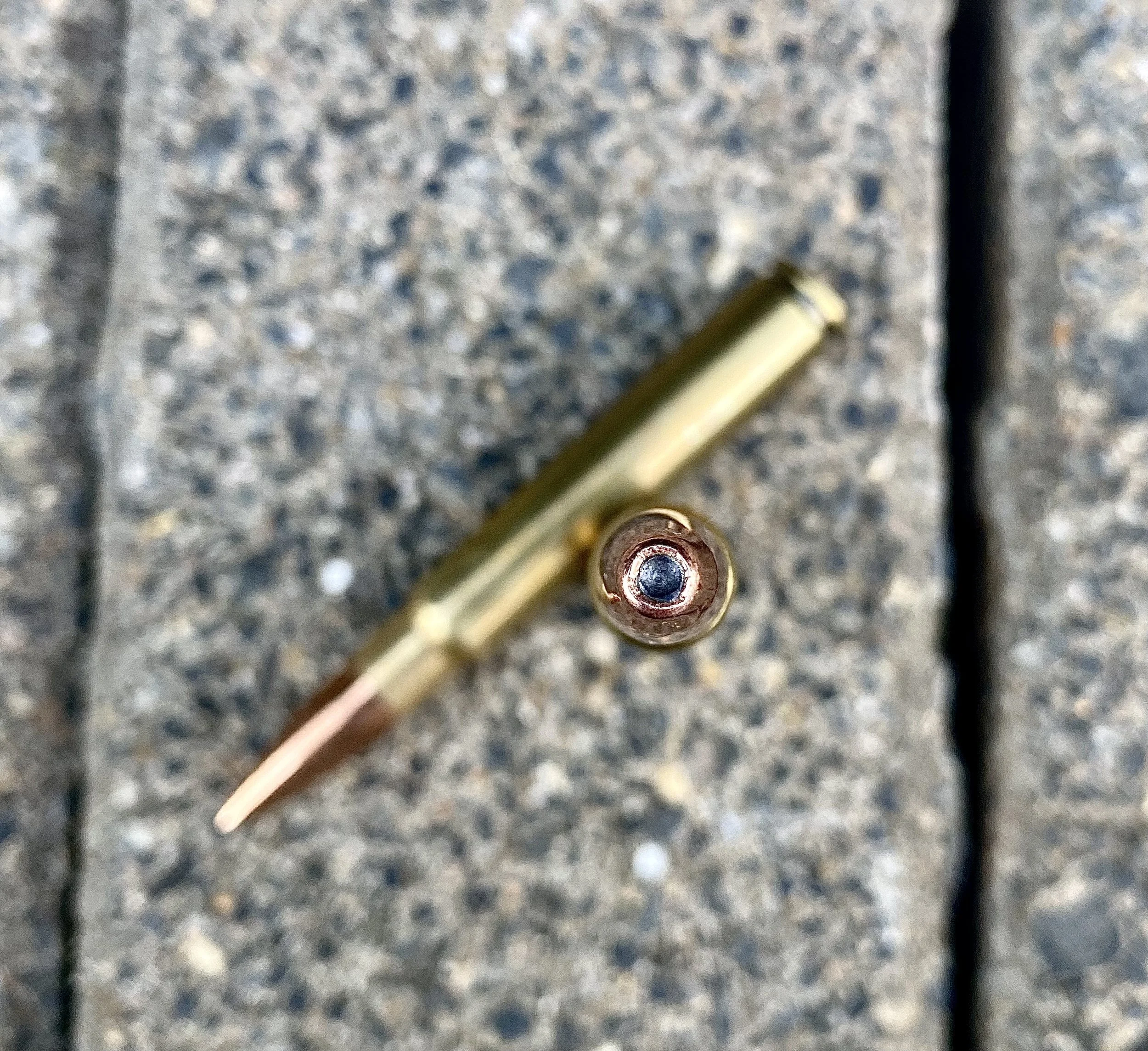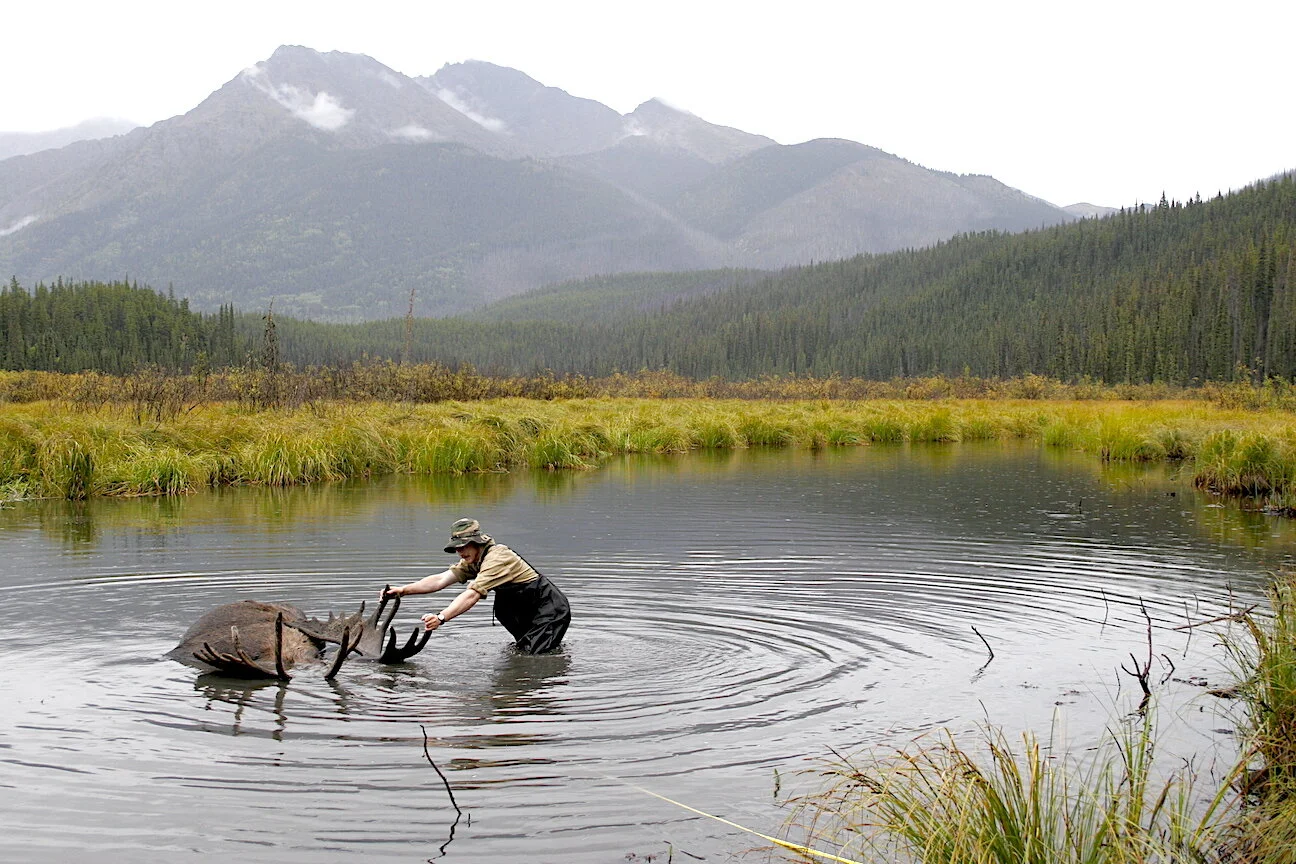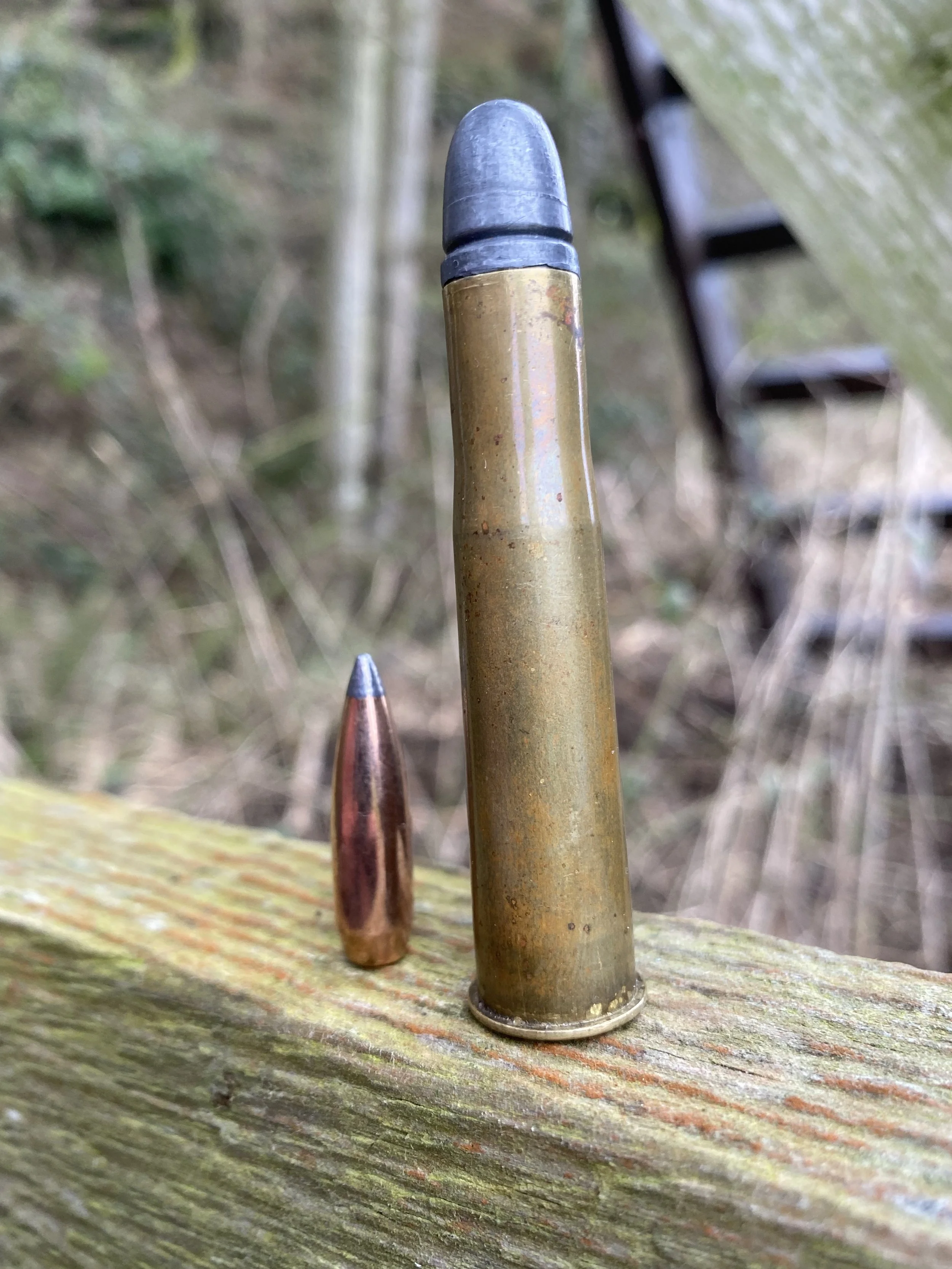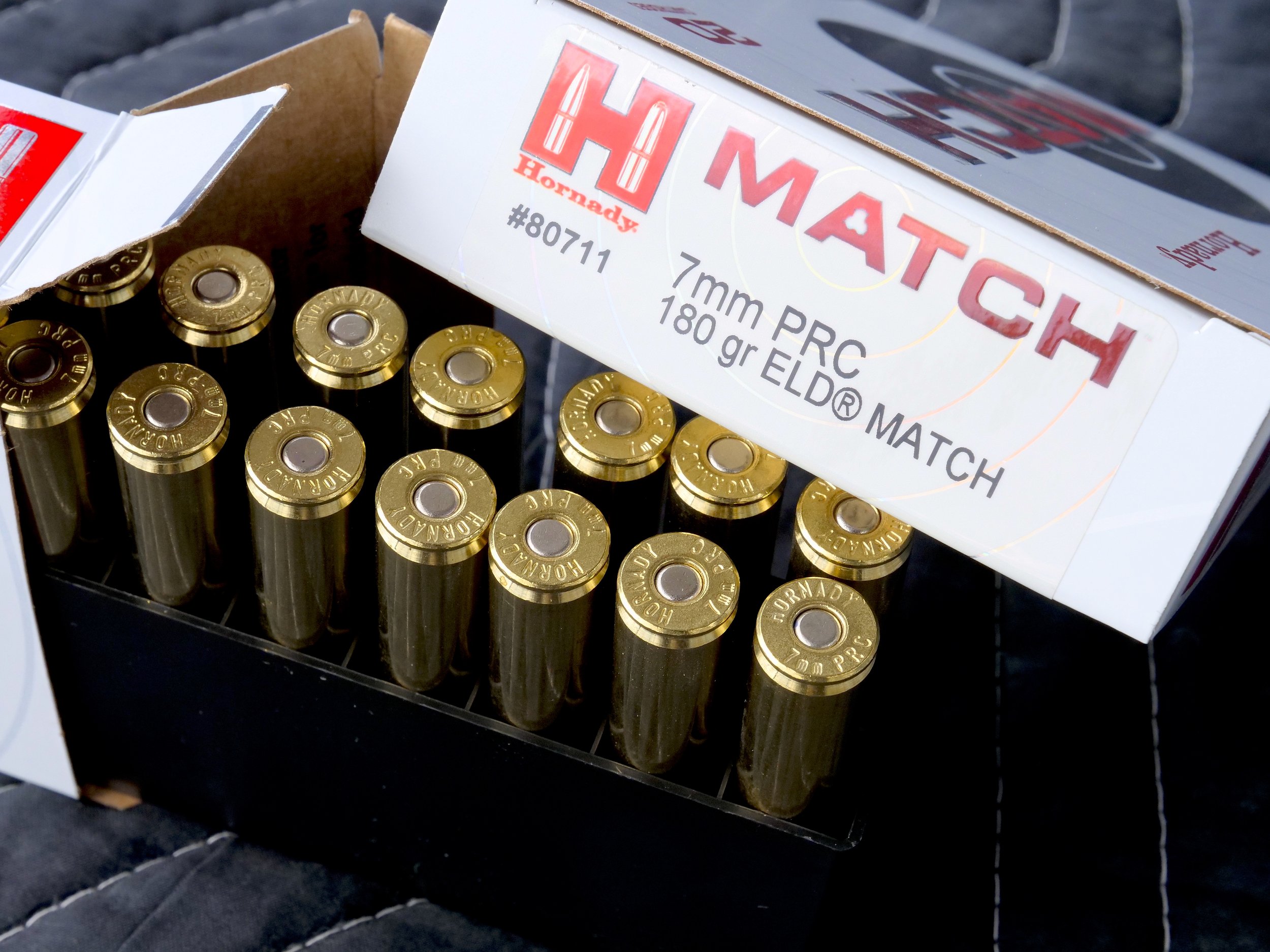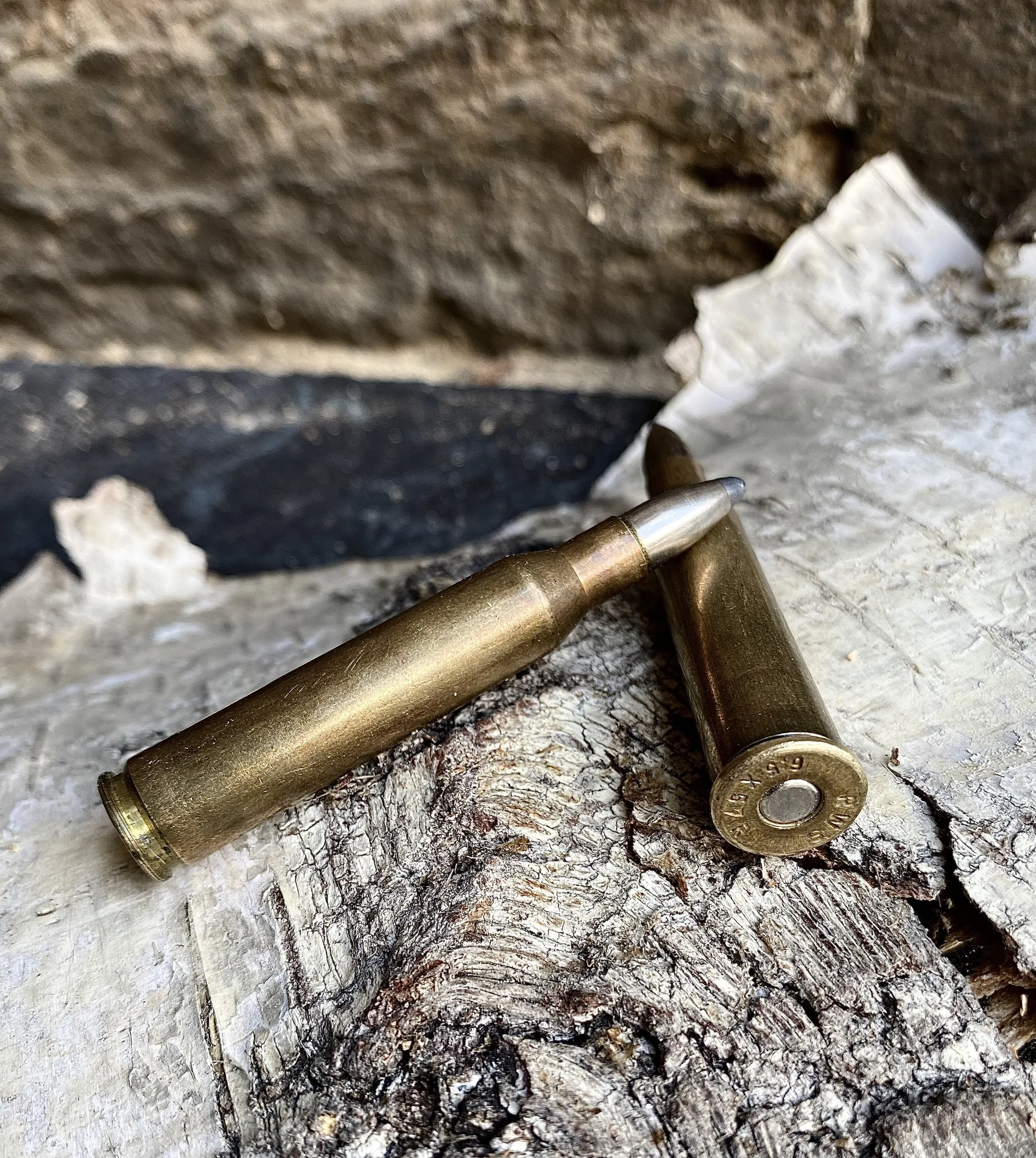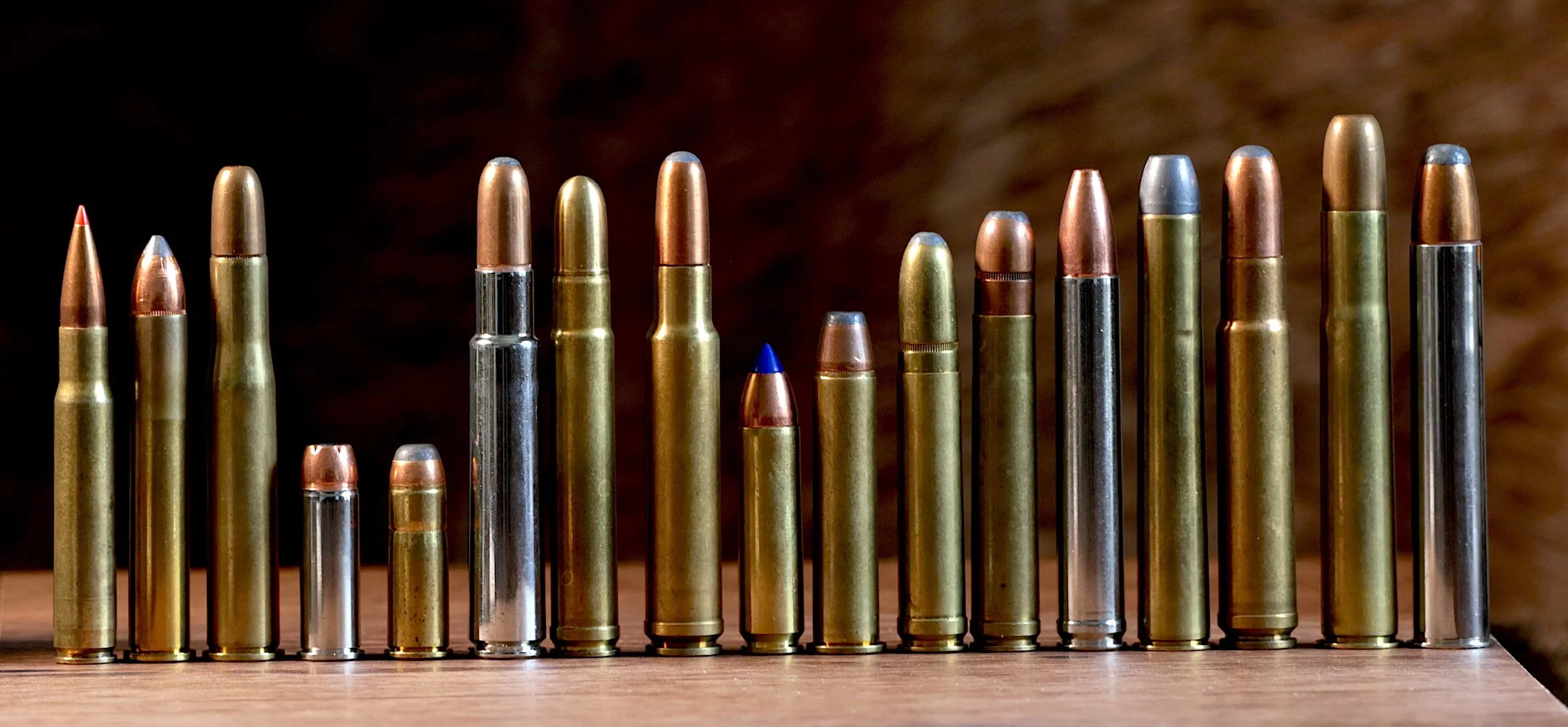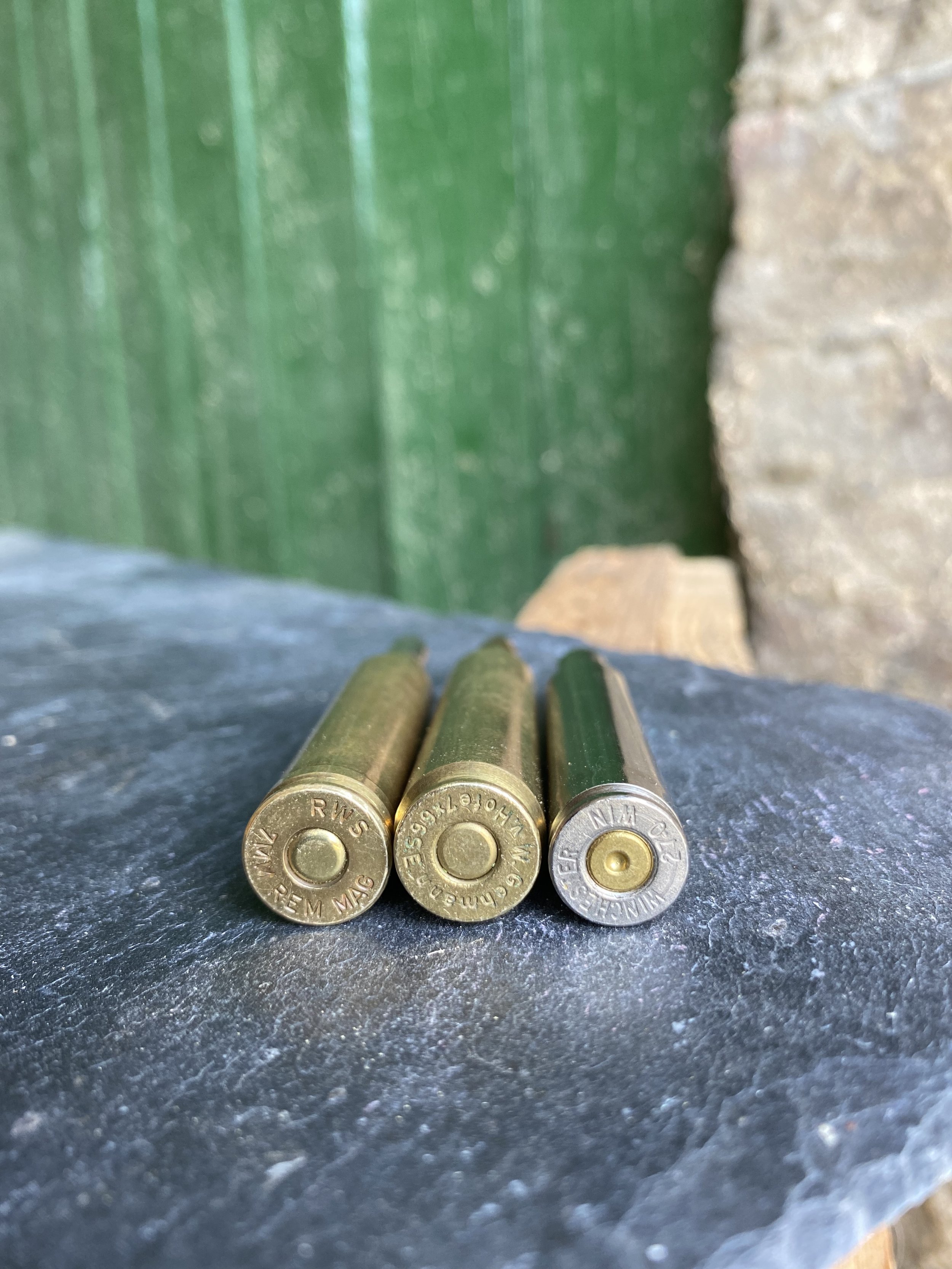270 Win. vs 6.8 Western & 6.5 PRC
The 6.8 Western might not be the most radical new cartridge of the past few decades, but it’s formatted with all the features today’s long range riflemen dote on. Short action, 35-degree shoulder, no belt, and fast twist barrels to stabilize long, heavy-for-caliber bullets (160- to 175-grains) with B.C.s in the .590 to .620 range. But…
How does it stack up to similar rounds? Specifically, the 270 WSM and 6.5 PRC?
Seeing triple? Look closely and you’ll easily see the 270 WSM is taller than the 6.8 Western in center. The 6.5 grips a .264” diameter bullet compared to the .277” of the 6.8. It also sports a more sloped, 30-degree shoulder. What isn’t obvious is the oh so slightly narrower case of the PRC. The question is, how will all this change ballistic performance?
Well let’s just see…
An Interesting Twist on Why History Can’t (Quite) Repeat Itself
As you may have heard, Winchester and Browning concocted the 6.8 Western by shortening the 270 WSM case by 0.084” and keeping the 35-degree shoulder. Stand this cartridge beside a 270 WSM and you’ll notice the shoulder sits a bit lower and the bullets perch a bit taller. SAAMI max COAL (Cartridge Overall Length) is 2.955”, minimum is 2.755”. What you don’t see is the SAAMI maximum Average Chamber Pressure — a whopping 65,000 psi, same as 22-250 Rem., 270 Win., 416 Rem. Mag. and, not surprisingly, the 270 WSM. This cartridge was built to make its bullets fly.
At this juncture you may be wondering why Winchester/Browning bothered creating the 6.8 when they already had the 270 WSM. The answer, of course, is barrel twist. The 270 WSM, one of the first short-fat cartridges of the 21st century, was engineered when we weren’t yet enamored of high B.C. bullets. Since 1925 our 270 cartridges were spitting 130- to 150-grain bullets with a 160-grain round nose now and then thrown in for close range punch on big stuff. I imagine WSM designers were of the same mindset that had been driving cartridge creators since the invention of smokeless powder — SPEED.
The 270 Winchester at right started the trend of fast .277 bullets way back in 1925. The new 6.8 Western (center) brings the caliber into the 21st century with new, long, heavy, high B.C. bullets.
Pushing Toward Warp Speed
From the 250-3000 Savage of 1915, celebrated for breaking the 3,000 fps barrier, through the Weatherby’s and Remington Ultra Magnums, 20th Century rifle shooters were fixated on speed. Oh, bullets got some attention. The U.S. Military saw the light shortly after creating the 30-03 Springfield of 1903. It was capped with a 220-grain round nose. Apparently someone forgot why we had set out to develop a new military cartridge in the first place: because the Spanish 7x57 Mauser with its spitzer-tipped .284 bullets were shooting flat and far and chewing us up in Cuba. So…
The military brass — never celebrated for excessive creativity — dropped the heavy, hard kicking, fast expiring 220 round nose after just a couple of years in favor of a 150-grain spire point. Say whew and howdy to the 30-06.
The old 30-06 might not have been the first to feature a spire point bullet, but once it appeared, the standard was set. Bullets have evolved to be more aerodynamic and efficient ever since.
By the 1960s some daring bullet makers were putting short little boat tails on their varmint bullets. This soon extended to “deer” bullets. Ogives — the taper of bullet noses — went tangent with a few going secant for even better drag resistance. I think Hornady started the secant nose on hunting bullets, but correct me if I’m wrong.
The real acceleration to truly efficient bullets didn’t seem to catch fire until Berger came out with its VLD series. That followed hot on the heels of affordable, portable laser rangefinder. This coincided with the War on Terror. The anti-war fervor of the 60s got buried under the rubble of the Twin Trade Towers. Military snipers, their gear, and their talents quickly grew a cult-like following. Suddenly high B.C. bullets and fast twist rifling had cachet. Everybody wanted to shoot 1,000 yards. And we had the tools to do it.
Berger Bullets helped jump started the trend toward super-high B.C. projectiles in the early 21st century.
That’s my round-about explanation for why the 270 WSM was engineered around 1:10 twist barrels shooting existing .277 bullets. Even if longer .277 bullets had existed, Winchester couldn’t just press them atop 270 WSMs. They wouldn’t stabilize. Even if they then offered fast twist 270 WSMs, owners of older rifles would probably try the new, heavy bullets and then complain when accuracy sucked.
So that, in my conjecture, is why they made the 6.8 Western. Well, that plus the competition. Let’s face it, since the inception of the 6.5 Creedmoor, our stalwart 20th century cartridges are losing their Big Man on Campus status. You can complain that young shooters these days are wimps, but you can also claim they are smart. They study ballistics and realize a light kicking .264 bullet with a high enough B.C. can drift and drop less and even carry more energy far downrange than many if not most of our older magnums driving less aerodynamic bullets.
Love or hate it, you can’t deny the 6.5 Creedmoor changed the world of rifle shooting — and our appreciation of long, high B.C. bullets.
That said, there is serious and growing worry that tackling elk and larger game with 140 grain bullets only .264” wide might not be optimum. Yes, Karamojo Bell killed some 300 elephant with a 6.5 Mannlicher-Schoenauer, but he gave that up when he noticed those 160-some grain bullets had too much tendency to bend while driving for the brain. The right 140-grain .264 in the right place can certainly terminate elk and moose, but there doesn’t seem to be much fudge factor. And when you start scratching the ranges many shooters now routinely assume are close enough… Maybe a touch more bullet mass isn’t such a bad idea? Time to man up? The advent of the 6.5 PRC suggests blind loyalty to the Creedmoor may be waning. The PRC doesn’t completely solve the lighter bullet issues, but its additional 200 fps sure helps.
CHECK OUT RON’S FAVORITE HUNTING GEAR
6.5 PRC in the Rearview Mirror?
If heavier bullets are part of the answer, the 6.8 Western may have it. But only if they go fast enough. Does the 6.8 have enough gas in the tank to keep its heavier bullets pacing with the 6.5 PRC? Based on appearances alone, we might wonder. Stand both loaded rounds beside one another and you might think you’re seeing double. Here’s why:
The case volume of each of these can’t really be specified because wall thickness from manufacturer to manufacturer varies, but outside dimensions suggest the 6.8 should hold a slight powder advantage. Current muzzle velocities seem to bear that out.
This is the sleek, light, Browning X-Bolt Western Hunter in 6.8 Western I’ve been working with to test 6.8 Western cartridges. Working flawlessly so far, averaging right at MOA with three different factory loads, and easy to carry/use in the field.
Using manufacturer loaded ammo with the highest MVs for the highest B.C. hunting (not target) bullets available, let’s compare trajectories and remaining energies of these two rounds. It will be the 142-grain Nosler ABLR in 6.5 PRC and the 165-grain Nosler ABLR in 6.8 Western. We’ll fire both through 8-pound rifles, 24” barrels in 10 mph right angle wind, zeroed for MPBR on an 8” target.
6.5 PRC, 142-grain Nosler AccuBond Long Range
6.8 Western, 165-grain Nosler AccuBond Long Range
As you might have guessed, this is one close horse race. Drops and drifts are nearly identical at 300 yards, but, as suggested by its heavier bullet, the 6.8 Western carries about 220 foot-pounds more kinetic energy. But on the drop and drift scale, the 6.5 PRC does better. Browse down the columns all the way to 1,000 yards and the drop/drift gap widens in favor of the smaller bullet. Why? Because it starts with 60 fps more velocity and enjoys tiny bit better B.C. rating. It all adds up. (Winchester credits their 165 ABLR load with a MV of 2,970 fps, but I suspect that’s through a 26” barrel. The 20 rounds I chronographed through a 24” barrel averaged around 2,900 fps. At 2,970 fps the 6.8 Western runs step for step with the above PRC load clear out to 1000 yards.)
Where the 6.8 Western shines is retained energy. Whether an elk is going to detect that 220 f-p advantage at 300 yards is moot. But for hunters who not only dote on punch but also value wider bullets, this might all add up to the 6.8 Western winning by a nose.
At this juncture I should warn you I’m using the G1 model for these calculations. These are slightly less accurate then the G7 model, but the B.C. numbers are so radically different that I fear many readers would get confused. Calculating these two loads with G7 might prove more accurate. Besides, B.C.s aren’t absolute. They vary by velocity, atmospheric conditions, any deformation from the barrel, and relative stability.
The next question some readers might pose hinges on target shooting. The PRC’s slim advantage in wind deflection and recoil suggest it’s the better option, but that might be offset by barrel life. Given the quite similar powder capacity of these two cases, the 0.006” larger bore diameter of the 6.8 (.270) suggests slightly longer barrel life.
What About the 270 WSM?
We’re certainly sifting with a fine toothed comb here. An easier comparison might be that older 270 WSM. If you already hunt with the 270 WSM (I’ve employed several to take everything from javelina to moose,) should you entertain moving up to the 6.8? Let’s see what the ballistics tell us: (I apologize for the different look of this table. My usual ballistic calculator, Shooterscalculator.com, went offline, so I switched to JBM, an excellent ballistics program you might want to try yourself.)
The bullet I used above is the Nosler ABLR, one of the highest B.C. 150-grain .277 bullets I could find. It gave a good account of itself, dropping and deflecting but a fraction of an inch more than the 6.8 and 6.5 PRC at 300 yards and even 400 yards. If that’s all the farther you shoot at game, you’ll really realize no advantage by switching to the PRC. The 6.8 Western will give you a bit more energy at all ranges, but no elk, moose or bear is going to shrug off the WSM’s 1,540 f-p at 500 yards.
One shot from a 270 WSM settled this moose at a distance of about 230 yards, as I recall. Would a 6.5 PRC or 6.8 Western done any better? The rifle is a Browning A-Bolt titanium/stainless synthetic lightweight that has accounted for a lot of game with never a hiccup. Looks like it was wearing a Swarovski 3-10X Z3 for this cold, wet hunt in B.C. Oh I do dearly love that Province for hunting.
BUY NOW
Conclusions
Working ballistics calculators like this might strike you as a lot of time invested for little return, but this is one of the ways we truly see the differences in cartridge/bullet performance. Too often we are swayed by advertising hype, the opinion of “experts” (like me?) or general impressions. “Gee, it throws a bullet 25-grains heavier. Must hit harder and drift less in the wind.” Not necessarily.
So how does the 6.8 Western rank against these other two short-fat rounds? For hunting at all reasonable and even unreasonable distances, they’ll all do just fine. I’d go with the 6.8 Western for maximum energy on target, the 6.5 PRC for flattest trajectory, least wind deflection and least recoil. The 6.8 should yield the longest barrel life. The 270 WSM might win “best buy” because you could find a lightly used one at a bargain price. Honestly, out to 500 yards the WSM performs so closely to these other two as to be functionally identical.
My conclusion is… redundancy. We’re looking at three peas in a pod. Unless I’m missing something. What do you think?
Here’s another look at that NE buck I took with the 6.8 Western and 175-grain Sierra Game King from a crazy 777 yards while hunting with Prairie Rock Outfitters. I’ve never shot that far at game before and probably never will again, but I was asked to test drive the long range potential of the 6.8 Western and had practiced extensively and successfully with it and a Leupold VX-6HD 3-18x44 CDS scope at long ranges. Conditions during the shot were perfect. No wind. Solid rest. Bullet punched right through both shoulders. Even Covey had to admire the size of this buck. They grow them big in NE corn country.








